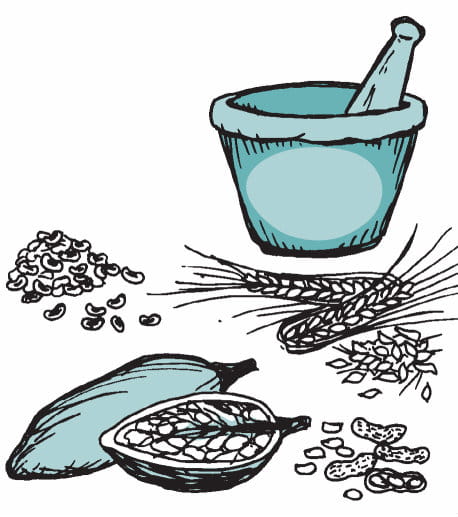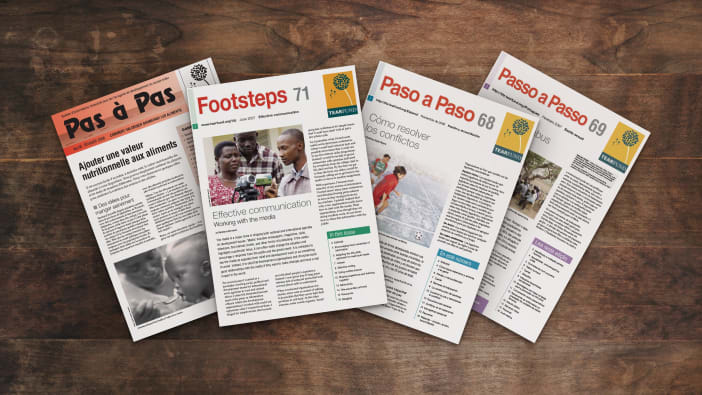A weaning food is a ready-made product consisting of a number of ingredients, which can easily be prepared into a porridge and fed to infants who are starting to need solid food alongside breast milk.
The World Health Organization advise that in most situations breastfeeding alone is the best choice for babies in the first six months of their lives. Weaning foods should then be gradually introduced. If circumstances make breastfeeding very difficult then weaning foods can be introduced earlier (eg at four months).
Before developing a recipe, you need to understand local eating habits. The most important questions to answer are:
- Which foods are easily available and affordable in the local area?
- Which foods are or are not acceptable because of tradition or religion?
- What kinds of weaning food do parents currently feed their infants?
- Do the recipes for these local foods need to be improved? If so, how?
Once you have answered these questions you can develop your own recipe for a weaning food. To make sure that it is nutritious for the infant, it should contain:
- A cereal (such as rice, wheat, maize or sorghum)
- A pulse for extra protein (such as beans or peas)
- Oil seeds for extra energy (such as peanuts or sesame seeds)
Energy, protein and small amounts of fibre are important for the infant to develop in a healthy way. Adding mashed fresh fruit to the weaning food will add useful vitamins and minerals into their diet. However do not add fruit or vegetables to the dry mix because it makes it impossible to store the weaning food safely.
Adapted from Agrodoks series No.22: Small-scale production of weaning foods (ISBN 90-72746-76-7) with the kind permission of Agromisa. Website: www.agromisa.org Email: [email protected].
Sample recipes
Makes 1 kilogram of dry mix. Add 3 cups of water for each cup of dry mix.
Nutrimix (Ghana)750 grams roasted maize
150 grams roasted and peeled soya beans
100 grams roasted peanuts
AK-1000 (Haiti)
700 grams cereal (maize, rice or sorghum)
300 grams of black, white or red beans, or peas
Bitamin (Niger)
670 grams barley
200 grams niebe beans (black-eyed beans)
100 grams peanuts
30 grams baobab fruit
Totomix (Tanzania)
800 grams roasted maize
100 grams roasted lentils
100 grams roasted peanuts
Fortimix (Tanzania) – For severely malnourished children. Makes 100 grams of Fortimix.
56 grams of Totomix
19 grams of sugar
10 grams of oil
15 grams of dried skimmed milk
To make sure that infants are not allergic to any of the ingredients, introduce them to individual ingredients and check for a reaction before feeding them the weaning food.










